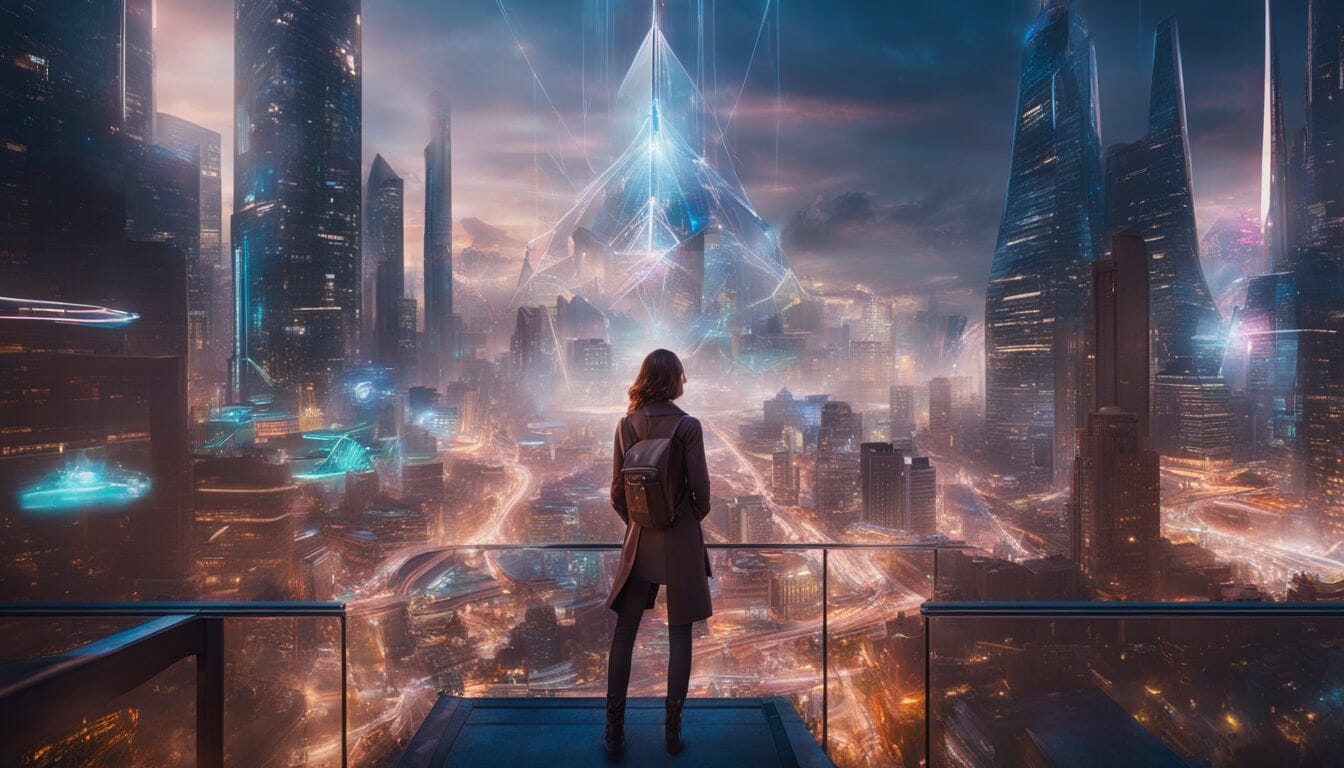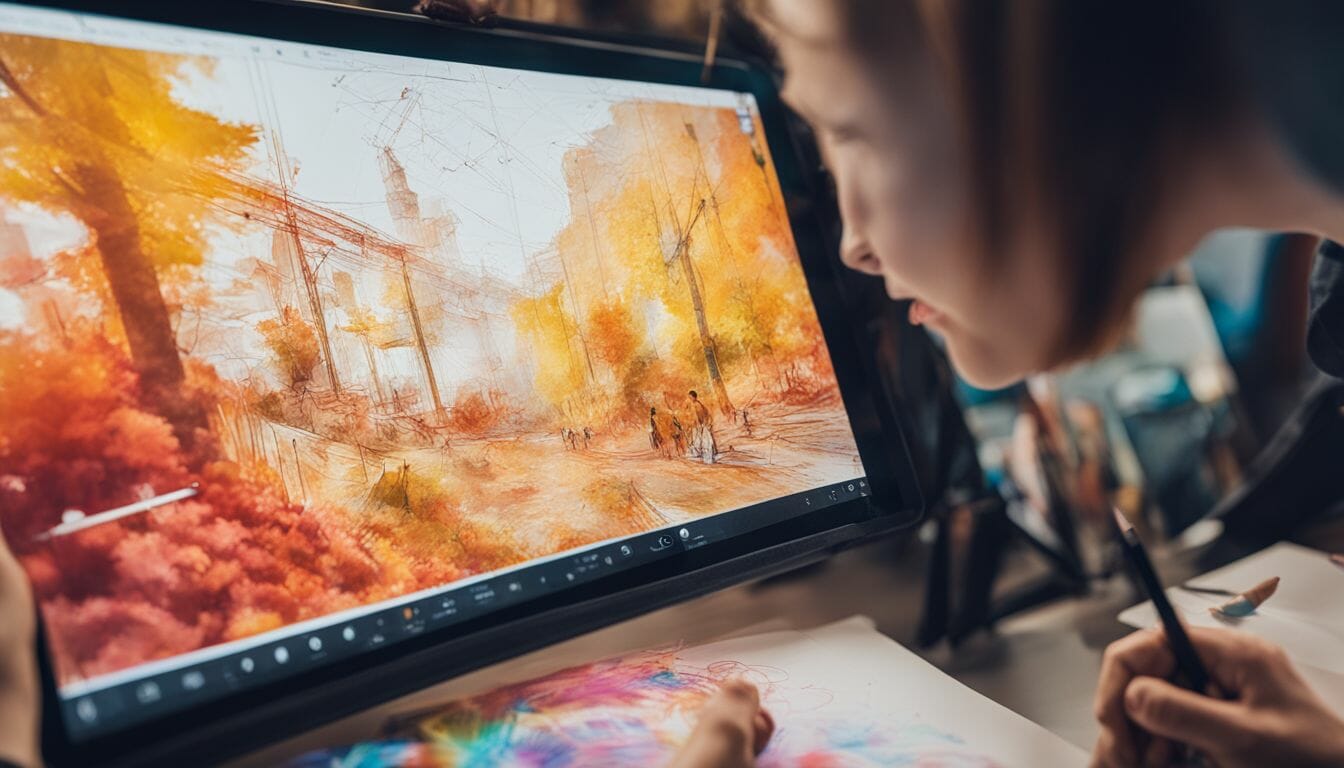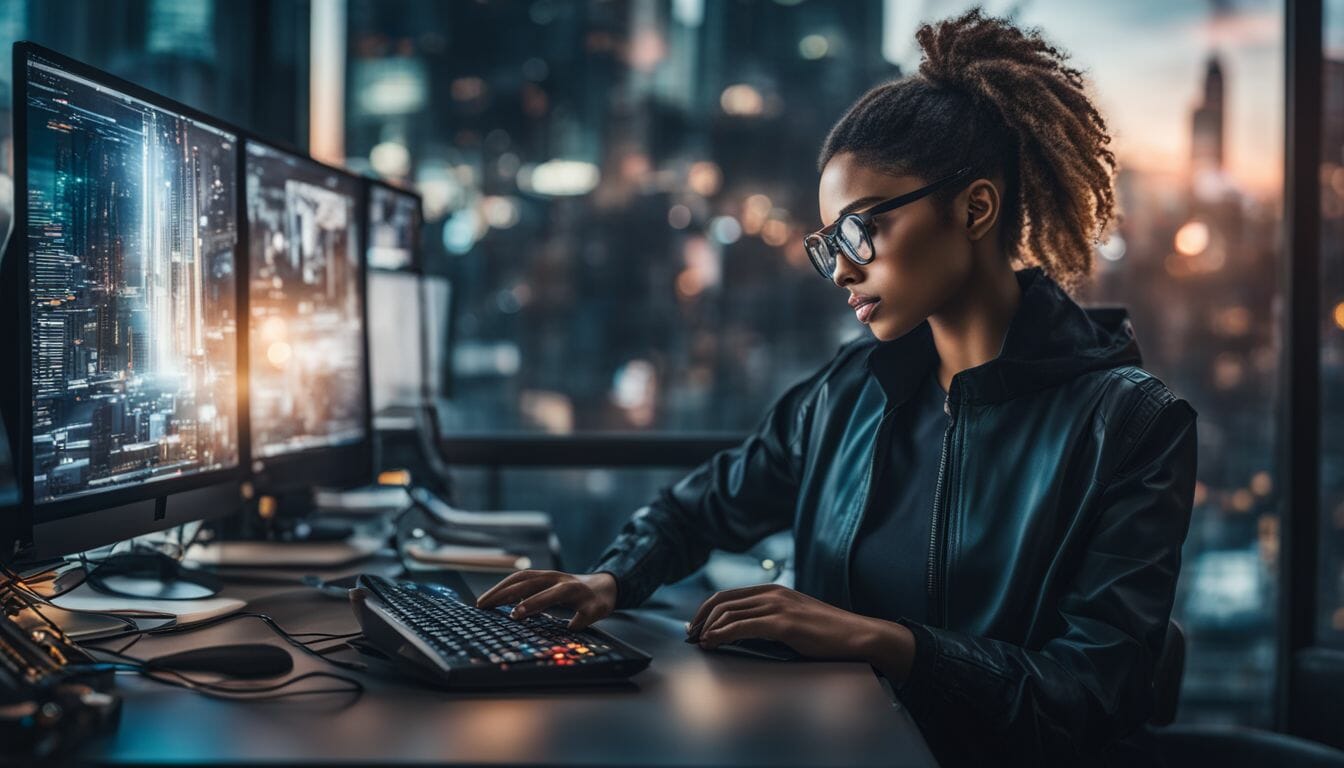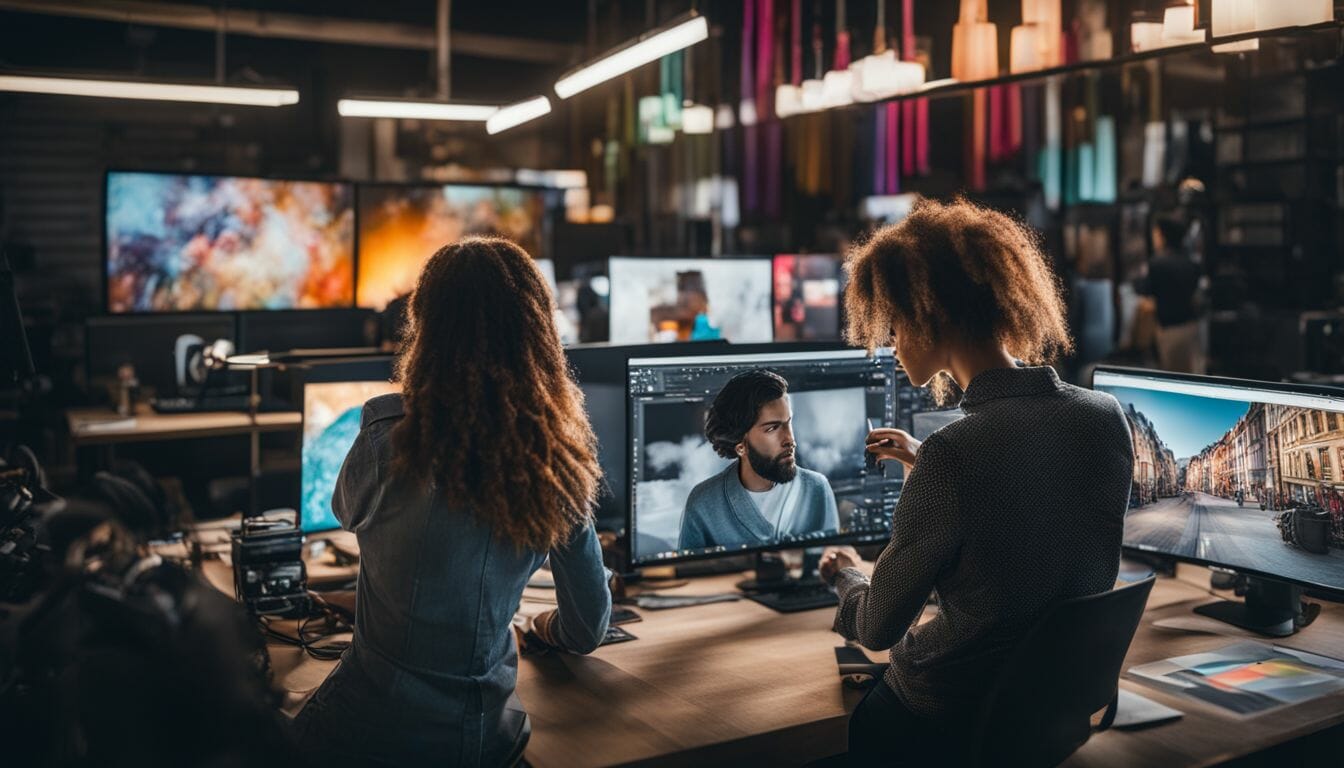Will AI Replace Graphic Designers? AI Takes Over the Industry!
Is the future of graphic design and creative industry about to be revolutionised by artificial intelligence (AI)? Studies show that AI has permeated multiple industries, including design. Today's blog post unravels how AI is changing the landscape of graphic design and its implications for designers worldwide.
Keep reading; this article will change your perspective on AI in the world of creativity.
Key Takeaways
AI is revolutionizing the graphic design industry by automating tasks, generating fresh content, and personalizing user experiences.
However, AI still has limitations in creativity, understanding emotional nuances, and interpreting context.
Human designers are essential for effective communication, ensuring quality control, and bringing originality to graphic design projects.
While AI may replace some aspects of a designer's job, the future of graphic design will likely involve a collaborative partnership between humans and AI technology.
Understanding AI in Graphic Design

AI in graphic design refers to the use of artificial intelligence technology and machine learning algorithms for creating, enhancing, and automating various aspects of the design process.
What is AI?
AI, or artificial intelligence, is like a smart machine. It can think and learn just like humans. This means AI can solve problems, make decisions and understand complex ideas. Some machines even create art! But they need lots of images to do this.
Understanding soft feelings is hard for them. So, AI has its highs and lows, just like us!
Applications of AI in Design
AI changes the way we design. Here are some ways it works in design:
AI creates fresh content. It uses many images to make new art.
It can cut down biases in big data sets, but it doesn't always do this well.
AI knows what users like. It gives them tailored content based on what they want.
Designers use AI to sift through lots of data quickly and with ease.
In medicine, IBM Watson uses AI to find diseases better than doctors can.
Designers don't just make things anymore - they also pick out the best AI-made designs.
Some tools like Dall.E 2 or Clipdrop use AI for design work.
In product design, user emotions and actions shape the final product using AI.
Automated tasks, such as designing banners or thumbnails, get faster with the help of AI.
With image handling or UI/UX design, AI has proven useful time and again.
Collaboration between humans and machines is now a reality thanks to AI in system design.
AI's Impact on Graphic Design

AI in Graphic Design has revolutionized the industry by providing automatic generation of layouts and color schemes, personalized user experiences, data analysis and even predicting future design trends.
Automatic generation of layouts and color schemes
AI tools like Midjourney and DALL-E are now able to make layouts and color schemes on their own. They use smart rules to change text into images. This means they do some of the work that a designer would normally do.
AI can make things like ads, art for businesses, and new images without needing help from a human. For example, Midjourney makes amazing pictures in a gothic-fantasy style using this method.
Adobe also has tools that use AI to help with design jobs. These improve prompts for layout and color scheme choices all by themselves!
User experiences personalisation
Generative AI tools like Midjourney, DALL-E 2, and Stable Diffusion have revolutionized the way users experience graphic design. These tools use artificial intelligence to personalize the design process by creating customized images based on user input.
For example, Midjourney allows users to generate gothic-fantasy-style images and award-winning scenescapes tailored to their preferences. DALL-E 2 takes personalization a step further by offering an outpainting feature that expands image frames according to user desires.
Stable Diffusion even improves design prompts automatically, providing an enhanced personalized experience for users. With these generative AI tools, graphic design becomes more engaging and tailored specifically to each individual's needs and preferences.
Predicting future trends in design
In the future, AI is expected to play a big role in predicting trends in the design world. With its ability to analyze massive amounts of data and identify patterns, AI can help designers stay ahead of the curve by forecasting upcoming styles and preferences.
This can be particularly useful in industries like fashion and interior design where trends change rapidly. By leveraging AI's predictive capabilities, designers can create products and designs that resonate with their target audience and meet their evolving needs.
Additionally, AI can assist in identifying emerging technologies and innovative approaches that may shape the future of design.
Will AI Replace Graphic Designers?

Will AI take over the role of graphic designers in the future?
AI's limitations in creativity
AI has its limitations when it comes to creativity. Unlike human designers, AI struggles to understand and express subtle emotional nuances in design. It is difficult for AI to discern the right balance of elements that evokes certain feelings or communicates a specific message effectively.
Training AI to be creative and original is also a challenge because it relies on existing data sets and patterns, which can limit its ability to generate truly unique designs. Additionally, AI may lack the imagination and intuition that human designers possess, making it hard for them to come up with innovative solutions or think outside the box.
Ultimately, while AI can assist designers in generating ideas and automating certain tasks, it cannot fully replace the creativity and artistic vision that humans bring to graphic design.
AI's inability to interpret context
AI's inability to interpret context is a significant limitation when it comes to graphic design. While AI can generate designs and layouts automatically, it struggles to understand the emotional subtleties and nuances that humans can easily grasp.
This means that AI may not be able to capture the intended message or tone of a design accurately. Training AI to discern or express these subtle emotional nuances is also challenging, making it difficult for AI systems to create truly impactful and meaningful designs.
Additionally, AI can struggle with filtering biases in data sets, leading to potentially biased or inappropriate design outputs. These limitations highlight the need for human supervision in AI-generated designs and emphasize the irreplaceable role of human designers who possess the ability to interpret context effectively.
The need for human supervision in AI
Human supervision is crucial when it comes to AI in graphic design. While AI can generate layouts and colour schemes automatically, it has limitations in creativity. It struggles to interpret context and understand emotional nuances.
This is where human designers come in, as they have the ability to think outside the box and bring original ideas to the table. Human designers also play a vital role in ensuring that AI doesn't produce biased or discriminatory content by supervising and filtering the data.
Moreover, human designers are essential for effective communication with clients and stakeholders, as AI may struggle with conveying complex ideas or understanding specific requirements.
Ultimately, human supervision is necessary to ensure that AI-enhanced graphic design results in high-quality, inclusive, and meaningful outcomes.
AI's issues with communication
AI can encounter challenges when it comes to communication. One of the main issues is that AI struggles with understanding and expressing subtle emotional nuances. Unlike humans, who can pick up on nonverbal cues and understand context, AI often fails to grasp the deeper meaning behind words or actions.
Training AI to recognize or convey emotions accurately is a difficult task that researchers are still working on.
Additionally, AI can face difficulties in filtering biases present in data sets. Since AI learns from the information it is fed, biased or incomplete data can result in skewed outcomes or even discriminatory decisions.
This poses ethical concerns and highlights the need for human supervision and intervention when using AI for communication purposes.
The Future of Graphic Design with AI

AI will both replace some graphic designers and assist talented designers in creating exceptional work.
AI replacing some designers
AI has the potential to replace some graphic designers in certain aspects of their work. With AI-powered design tools, it is possible to automate tasks such as generating layouts and color schemes.
AI can also personalize user experiences and predict future design trends. However, there are limitations to AI's creativity and its ability to interpret context. Human supervision is still necessary to ensure quality and effective communication with clients.
While AI may replace some designers, it can also assist good designers in becoming even better by streamlining processes and saving time. Ultimately, the future of graphic design will likely involve a collaborative partnership between humans and AI technology.
AI aiding good designers to become great
AI has the potential to elevate the skills of good designers and make them even greater. With AI-powered design tools, designers can enhance their creative abilities and streamline their workflow.
These tools can offer suggestions, generate variations, and provide valuable insights that help designers expand their ideas and find new perspectives. By harnessing the power of AI, good designers can unlock new levels of innovation and efficiency in their work, allowing them to create exceptional designs that captivate audiences and achieve desired outcomes.
Additionally, AI can assist designers in overcoming challenges such as time constraints or lack of inspiration. By automating mundane tasks like resizing images or creating templates, AI frees up more time for designers to focus on higher-level problem-solving and ideation.
Conclusion
So will AI replace graphic designers? Lots of people are worried about their future, will AI replace software developers, will AI replace therapists, will AI replace web developers, there are so many articles covering these worries that you've got to take notice.
In conclusion, while AI has the potential to automate certain aspects of graphic design and assist designers in their work, it is unlikely to replace them completely. AI's limitations in creativity, understanding context, and effective communication make human designers an irreplaceable asset.
The future of graphic design lies in collaboration between humans and AI, where designers can harness the power of AI tools to enhance their creative process and deliver innovative solutions.
FAQs
Will AI completely replace graphic designers?
No, AI is not expected to completely replace graphic designers but rather assist them in their work by automating certain repetitive tasks and providing design suggestions.
What tasks can AI help with in graphic design?
AI can assist with tasks such as generating initial design concepts, creating templates, suggesting color palettes or typography options, and even automating basic layout adjustments.
How will AI impact the role of graphic designers?
AI will likely change the role of graphic designers by shifting their focus from manual labor to more creative and strategic aspects of design, allowing them to spend more time on ideation, problem-solving, and client collaboration.
Is learning graphic design still valuable if AI is becoming more prominent?
Yes, learning graphic design remains valuable because while AI can automate certain tasks, it cannot replicate human creativity and critical thinking skills that are essential for effective visual communication.
